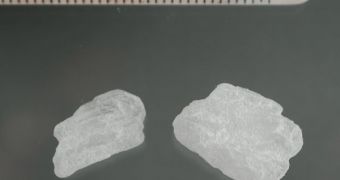Methamphetamine (MA), or crystal meth, is a highly addictive drug, strictly-regulated by drug enforcement agencies worldwide, due to its hazardous effects. It may cause severe physical and mental damage, after prolonged use, and withdrawal symptoms are also very difficult to handle, as they involve nausea, insomnia, paranoia, hallucinations, extreme hunger and anxiety.
In a first-of-its-kind study, researchers at the University of Alberta Faculty of Medicine and Dentistry (UA – FMD) statistically showed that MA usage was directly linked to smoking, drinking and an early active love life, especially in teenagers under 21 years of age. In the study, the subjects who had previously displayed these risk factors also proved to be more prone to starting using crystal meth, whereas teens in the control group – with no history of drug abuse, drinking or smoking – showed little risk of becoming addicted to the drug.
"If risk factors for MA use could be identified, physicians and other health-care professionals who work with youth may be better equipped to identify MA users, and develop education and prevention programs that could be targeted to youth at greater risk for using MA," argued UA – FMD Department of Pediatrics professor, Dr. Terry Klassen.
"Engaging in high-risk behavior may be a gateway for methamphetamine use or vice-versa. You don't know beforehand whether a hypothesis will be proven or disproven. If we didn't engage in these kinds of studies, we wouldn't know for sure," he added.
Klassen compiled a list of high-risk factors that may determine youth experiencing them to pick up on drug use – the list includes strict parental monitoring, a family history of violent crimes, drug or alcohol abuse, and incarceration in juvenile detention centers. All these factors were associated with a very high risk of MA use, which applies especially to teenagers coming from poor or disorganized families.

 14 DAY TRIAL //
14 DAY TRIAL //